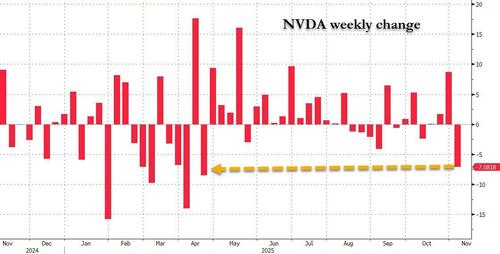By Dominic Goncalves
South Africa has installed more rooftop and on-site solar contracted to private consumers in the past year and a half than in the past 10 years under government programmes.
For industry experts, this is a staggering figure – what took almost 10 years under public programmes, took little over a year once regulations were lifted and load shedding incentivised the private residential, commercial, industrial and agricultural sectors to build their own resilience and get off the grid.
Renewable Energy Initiatives
In 2010, South Africa set up the Renewable Energy Independent Power Producer Procurement Programme which, at the time, was one of the most highly regarded, “best practice” ways of implementing renewable energy globally.
I was involved in three of the projects at the beginning of the programme – Khi, Kaxu and Xina Solar One – which produce about 250MW of solar power into the grid in the Northern Cape.
Ninety-two of the projects were installed from 2011 to 2016, some 6 300MW of solar and wind – before they came to a grinding halt as Eskom and government forces put a stop to the programme, arguably to force through a nuclear deal with Russia instead.
After a three-year hiatus, this programme was continued again, and the installed base was 3 442.6MW of wind and 2 287.1MW of solar as of late August 2023.
But the load-shedding deterioration that occurred from mid-2022 onward has caused nearly every progressive-thinking South African to explore ways to get off Eskom’s grid and have their electricity supply as much “in their own hands” as possible.
Diesel generators are expensive – more than Eskom’s power – but solar power has become cheaper than Eskom, in almost every application.
Although it works roughly only 30% of the year (when the sun is shining), during this 30%, you can have your own power at a cheaper rate than what you’d pay for Eskom when there’s no load shedding and in off-peak hours.
The Solar Boom
In the space of a little more than a year, the installed base of solar “not contracted to Eskom” or government programmes leaped from 981MW in March 2022 to 4 740MW by August 2023.
What took 10 years to achieve in the applauded government programmes took less than a year once regulations were opened to allow for residents and businesses to do the same.
Three main factors contributed to the explosion in domestic and commercial solar installations:
The price of solar decreased more than 90% from 2008 to 2023. Solar is cheaper than Eskom power, meaning one can achieve savings on installing a system versus not.
There is an increasingly lower payback period and the business case makes sense.
Regulations prevented private consumers from installing projects above 1MW until 2021. Once permitted, a flurry of demand from mines, smelters, industrial facilities, data centres, hospitals, shopping malls and other larger loads all began developing solar projects – ideally on their roofs and on-site if enough space – otherwise, “wheeled” from other parts of the country, using Eskom’s grid to transport the power.
Increased load shedding. Diesel is approximately 8-10x the cost of solar power. Diesel works all of the time, solar works 30% of the time.
The best way you can get your diesel cost down is to install solar to offset your diesel when the solar is operating.
Eskom’s Winter Outlook and Factors Contributing to Reduced National Demand
In May 2023, Eskom published its winter outlook. It looked bleak. Power plants were continuing to break down and those under maintenance were delayed from coming back online.
Eskom assumed that demand on the grid would be similar to last year – around 34GW.
To some fortunate surprise, demand this winter was only 31GW – which is 3 000MW less than expected and roughly the same amount as the new solar energy installed that is not connected to Eskom’s grid.
To unpack and examine this in detail, one cannot attribute this to solar power taking consumers off the grid as being the sole cause of this reduction in national demand. But it is one of the main ones.
Some of the factors that caused this drop in national demand:
Increased wind generation in the first weeks of winter.
Increased commercial, industrial and agricultural usage of on-site Solar PV and Bess systems, the rapid adoption of which is driven by resilience to the high levels of current and future forecasted load shedding.
High winter prices for Eskom Megaflex tariff starting June 1, 2023 for industrial, mining and energy-intensive industries, on top of the high Eskom average electricity price increase on April 1, 2023.
The “double tariff increase” caused some smelters and heavy operations to reduce their loads.
A weak economy and low business confidence.
Energy switching to gas for domestic heating and cooking.
In late August 2023, the national demand figures were revised further downward: it seems that, moving into the summer months, demand has further decreased, from 34GW to 31GW to now 28.5GW.
Some 328MW of solar was reported installed between June and August 2023.
Challenges and Benefits of Solar Power
Eskom considers solar “a double-edged sword, as do most utilities globally, and any operation that requires 24/7 power. Solar is variable: it’s great when it’s producing.
But even with batteries, it cannot store power for long periods. This means that during winter when there are extended periods of no sun, all that fleet of gigawatts of solar power – for a week at a time for example – can be of no use.
It is during these times when the power is often needed the most. This can be factored in. It is well known prior to installing that it will only work 30% of the time, during daylight hours and with high seasonality – more in summer, less in winter.
This can be planned and worked around.
What solar does, is free up strain on the grid for Eskom to conduct much-needed maintenance.
It relieves the consumer of needing to burn diesel generators which are much more expensive.
It enables consumers – whether residential or commercial or industrial – to retain some autonomy of their electricity supply in their homes and their businesses in a country where public service delivery, especially electricity, has a poor track record with little expectation of improvement in the short to medium term.
Global and Local Solar Trends
Globally and in South Africa – solar is booming. It is good for the climate and good for the environment, and there are few if any drawbacks from installing it to become more in control of own your electricity supply and therefore your own home and business.
It will be interesting to see in five years how much more solar is installed – how much load that takes off Eskom’s grid – and how much load shedding it will avoid. It may not be the silver bullet against load shedding, but it is certainly one of the main ones.
Dominic Goncalves is the decarbonisation adviser at Cresco Project Finance.
BUSINESS REPORT
















